10 young artists to watch in ‘OVR: Miami Beach’
Fresh talents abound in the Online Viewing Rooms’ Nova and Positions sectors
登入並訂閱巴塞爾藝術展專題故事
From solo showcases to tightly curated displays, galleries in the Positions and Nova sectors of ‘OVR: Miami Beach’ have prepared exceptional presentations. Here are some of the new names and experimental practices particularly worth keeping an eye out for.
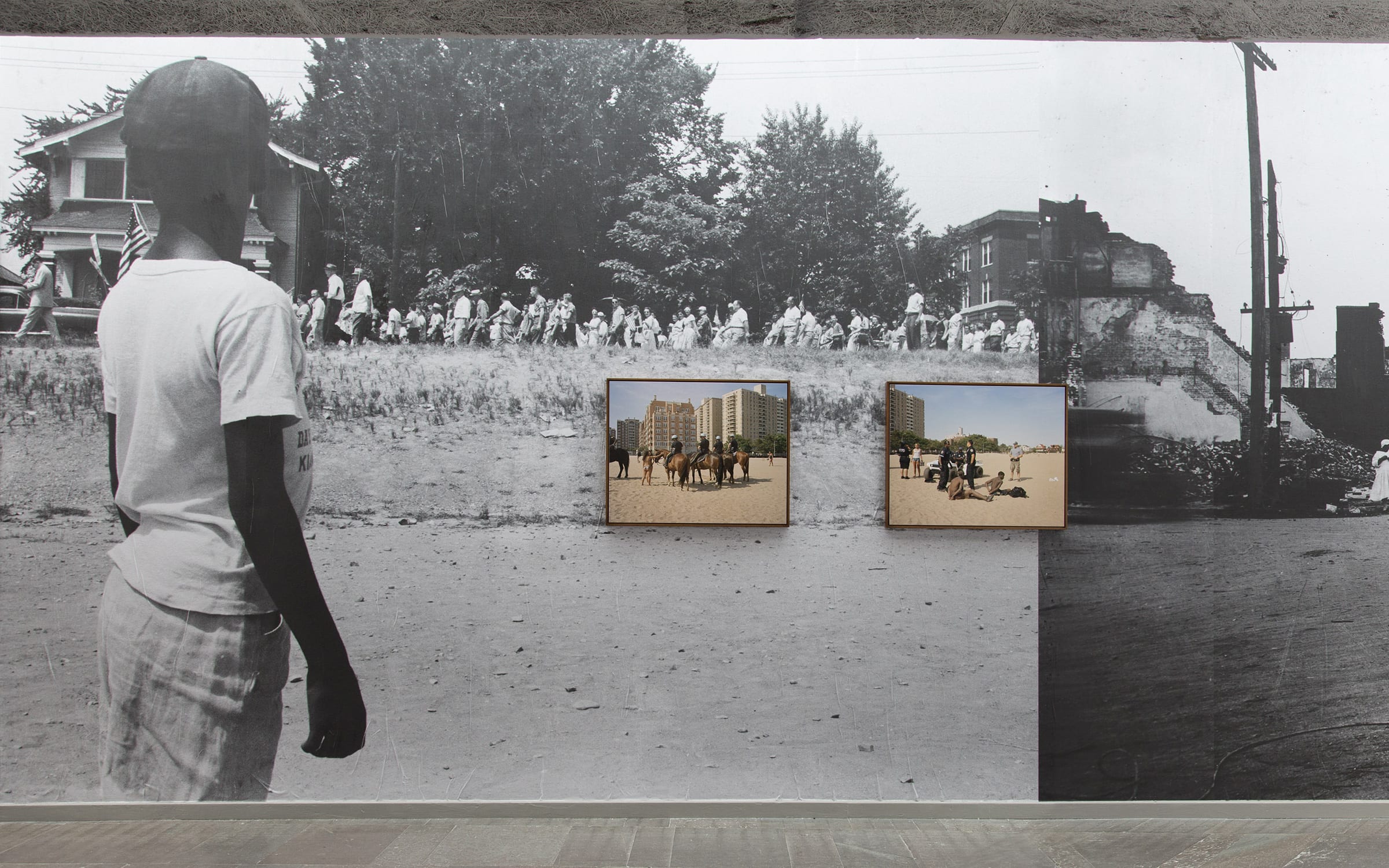
An artist and filmmaker, Santiago Mostyn is inspired by his upbringing in Zimbabwe and Trinidad and Tobago. In the ongoing series ‘Red Summer Edit’ – presented by Andréhn-Schiptjenko(Stockholm and Paris) – he considers the Black body in two different political contexts: late capitalism in the US and post-colonial populism in Southern Africa and the Caribbean. Red Summer Edit (Beach Arrests) (2018) exemplifies this investigation. It features color photographs he took during the arrest of two Black boys at Rockaway Beach in New York, hung against walls pasted with black-and-white archival images from the aftermath of racial violence in Tulsa, Oklahoma, in 1921, Harlem, New York, in 1965, and Washington, D.C.
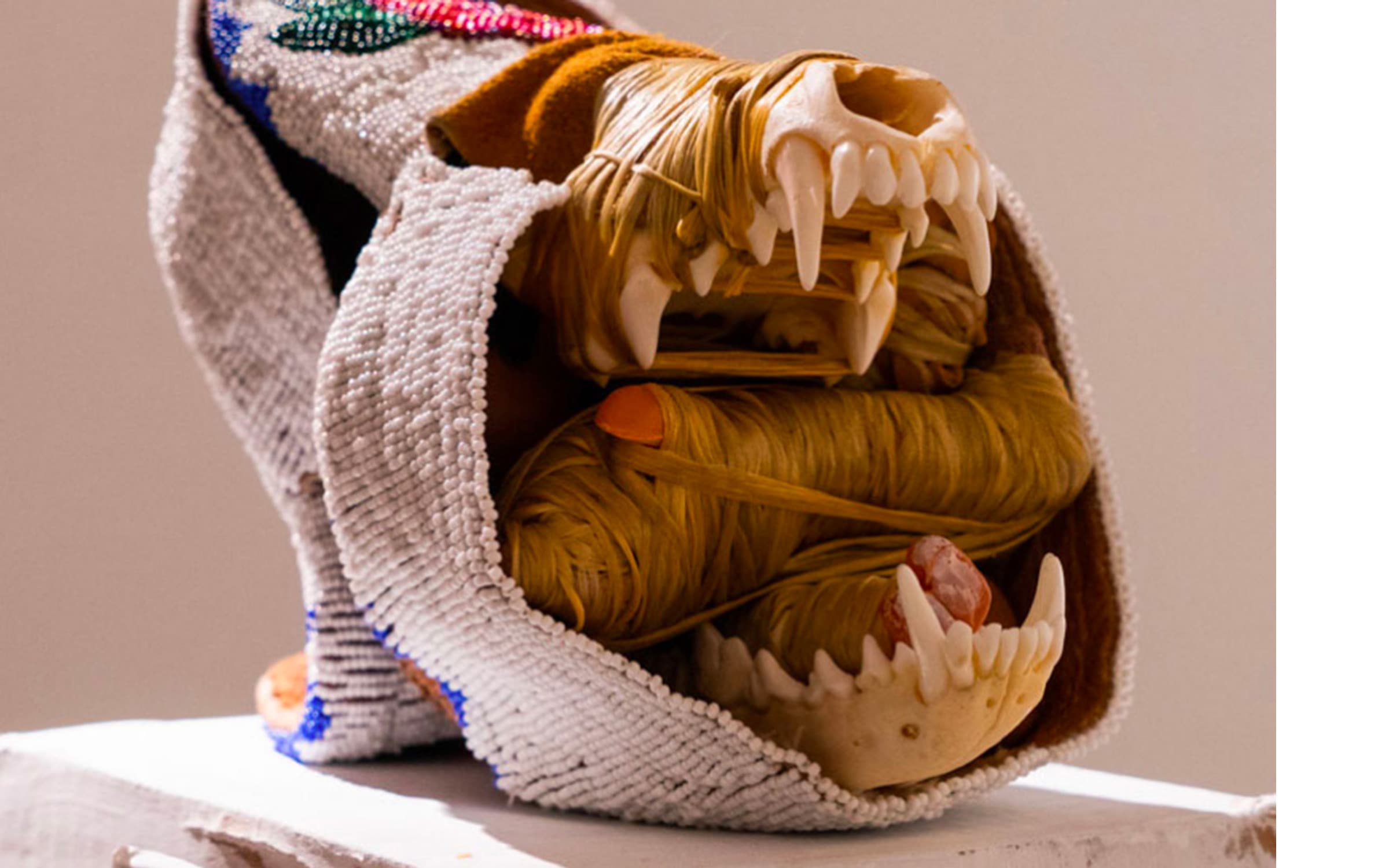
Also exploring her heritage is Natalie Ball, whose work is presented by New York City’s Half Gallery. Ball identifies as Black and Native American, specifically Modoc and Klamath. In her artistic practice, she reclaims materials associated with Indigenous culture – such as deer spines, beaded moccasins, and human hair – combining them to form anthropomorphic sculptures. Such materials allow Ball’s sculptures to interrogate clichéd Native American narratives, which, in the Western and Euro-centric discourse, are too often accepted wholesale.
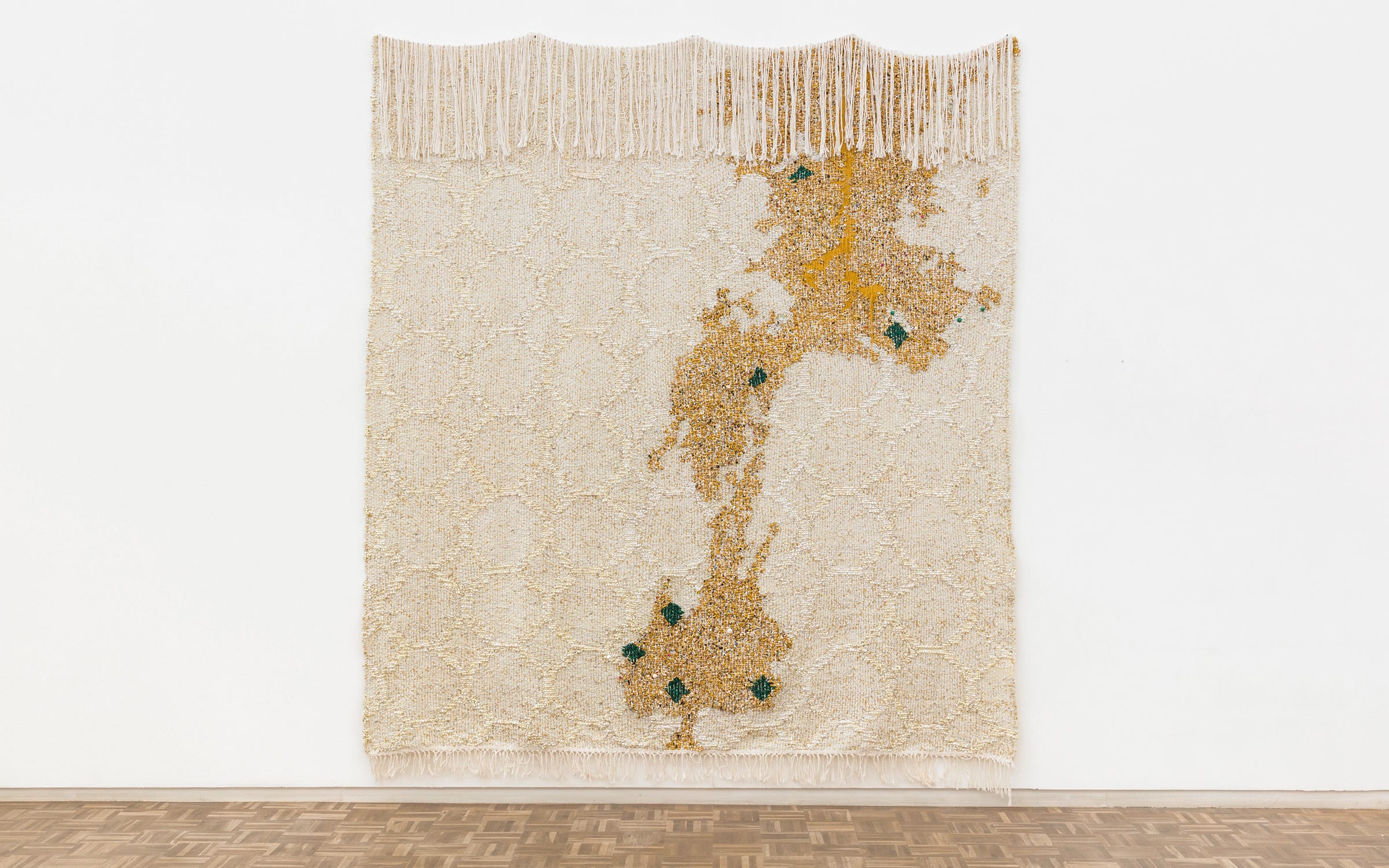
Where Ball repurposes symbolic materials, the South African artist Igshaan Adams reinterprets them. His intricate tapestries, on view with blank projects (Cape Town), find their origins in the vinyl floor coverings typically seen in Cape Town’s working-class homes, which are often Black households. With glass and stone beads, wood, plastic, chains, and seashells, he recreates and enlarges the flooring’s structures, including signs of wear and tear. The finished pieces address lived experience but, perhaps more importantly, also represent South African class structures and the racial segregation therein. Adams abstracts individual stories to create a place from which new narratives can emerge.
![Dozie Kanu, Chair [ xiii ] (Stand Up) (Ja Rule) (details), 2019. Courtesy of the artist and Project Native Informant, London.](https://dza2a2ql7zktf.cloudfront.net/binaries-cdn/dqzqcuqf9/image/fetch/q_auto,dpr_auto,c_fill,f_auto,w_auto/https://d2u3kfwd92fzu7.cloudfront.net/asset/cms/Art_Basel_OVR_Miami_Beach_Dozie-Kanu_Project_Native_Informant.jpg)
Nigerian-American designer and artist Dozie Kanu creates quasi-functional sculptures that similarly invite viewers to explore new narratives, albeit with an approach that relies upon the visual conflation of fine art and utilitarian design. In his manipulation of found objects, such as a car wheel rim in Chair [iii] (2018), which references his hometown of Houston’s slab culture (slab is known by many as an acronym for a customized car that is ‘slow, loud, and bangin’’), Kanu produces prismatic objects: functional appearances disguise deeper layers that address racial, political, material, and economic histories. Kanu’s work will be presented in the viewing room of London’s Project Native Informant.
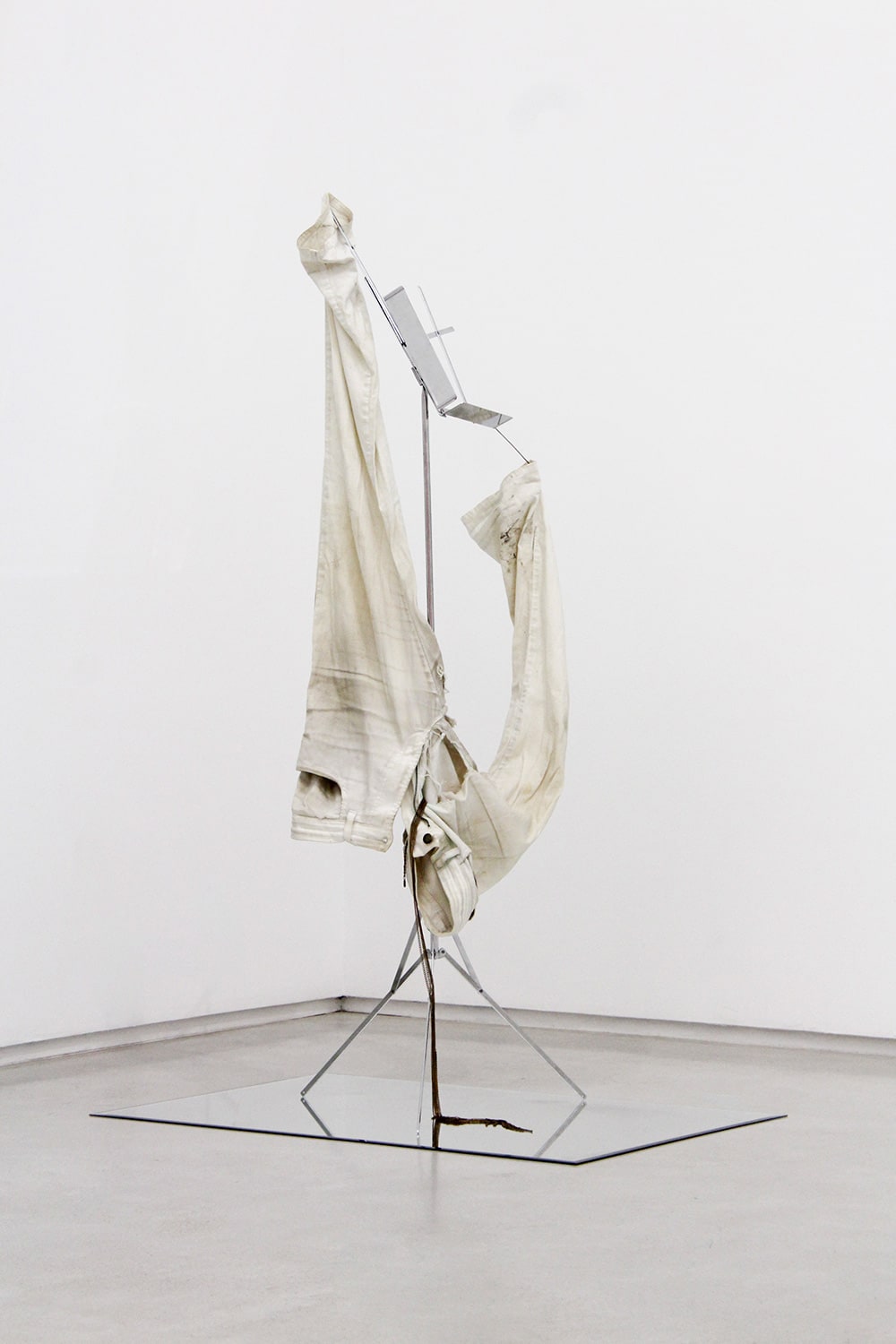
Found objects also abound in the New York City-based artist Kayode Ojo’s sculptures, photographs, and installations. White Uniqlo jeans are a recurring motif – be they on a person in a photograph or hung upside down from a sheet-music stand. Other items, such as a phoropter (an optical measuring device) and a Graflex camera, also crop up in his solo presentation with Martos Gallery (New York City). Ojo has said he is drawn to ‘glamorous material, or faux-glamorous material, as the idea that it’s someone trying to express value.’ In offering such material alongside those that have the ability to shift perceptions, his work subjects art objects to these hermeneutic tests.
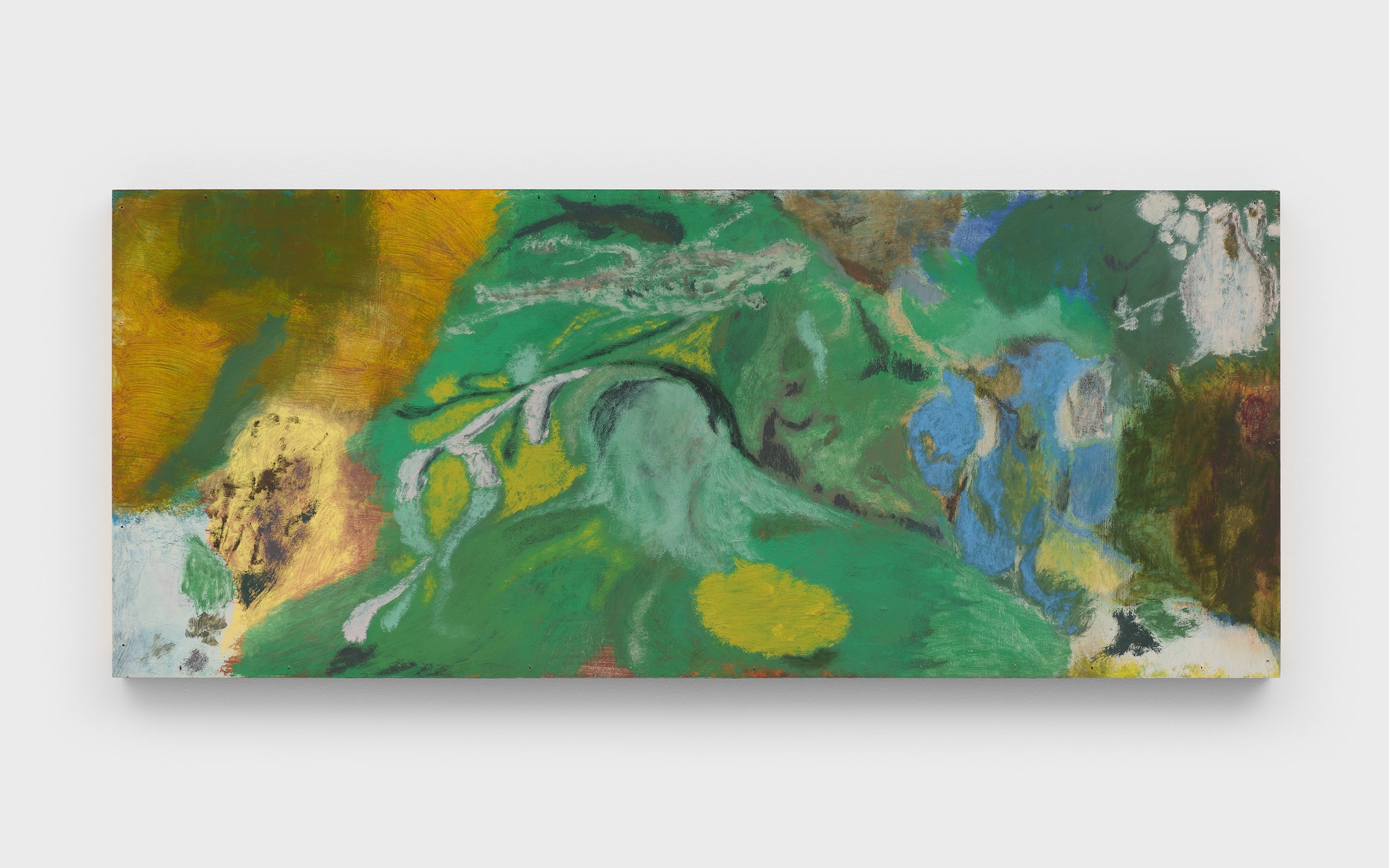
Meanwhile, any hope of seeing an object – much less its associations – is rendered null by Andy Giannakakis’s paintings, presented by Los Angeles gallery Park View/Paul Soto. The Californian artist’s abstract works, with their blurred shapes and colors, make it seem like a thick fog has settled between the viewer’s eye and the canvases. Yet, through titles, the artist reasserts a sense of meaning: after reading Pa’linka for Two (2020) or Backtracker (2019–2020), figures begin to take shape. However, as with an illusion, they are likely to disappear as quickly as they emerged, an impression that encourages the beholder to look at these paintings with patience and concentration.
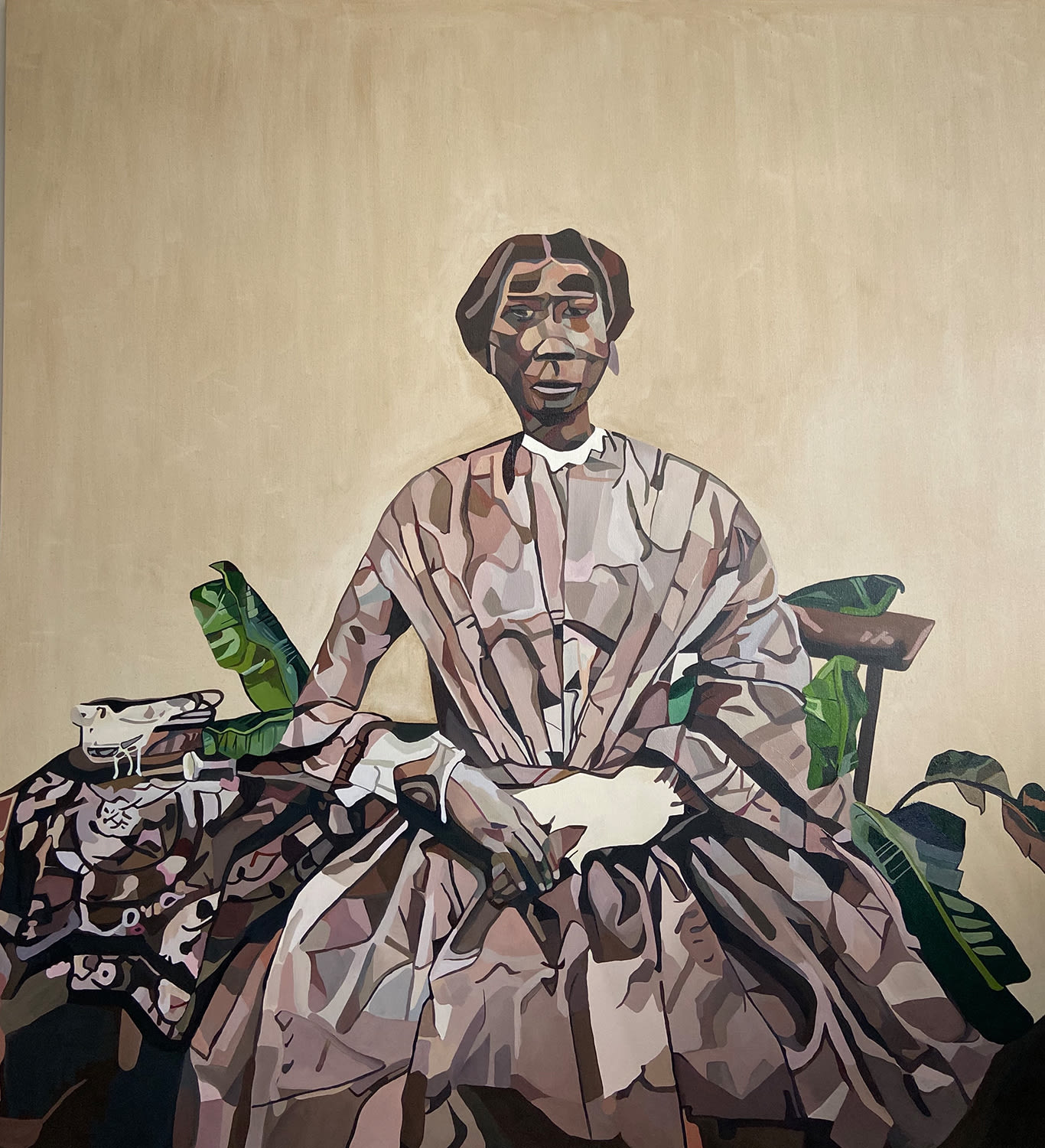
Standing in direct contrast to Giannakakis’s canvases are those by Joy Labinjo, a British-Nigerian artist who has a steadfast commitment to figuration. In a style akin to collage, Labinjo paints figures from her personal life, as well as from found and archival materials. Her paintings tell a larger story – one that explores the relationship between identity, race, and culture. In her most recent works, presented by London’s Tiwani Contemporary, Labinjo focuses on little-known events and figures in Western modernity, such as Sara Forbes Bonetta, an Egbado princess of the Yoruba people in West Africa who was enslaved at the age of five but then, in an unlikely turn of events, was liberated by the Royal Navy and raised as goddaughter to Queen Victoria.
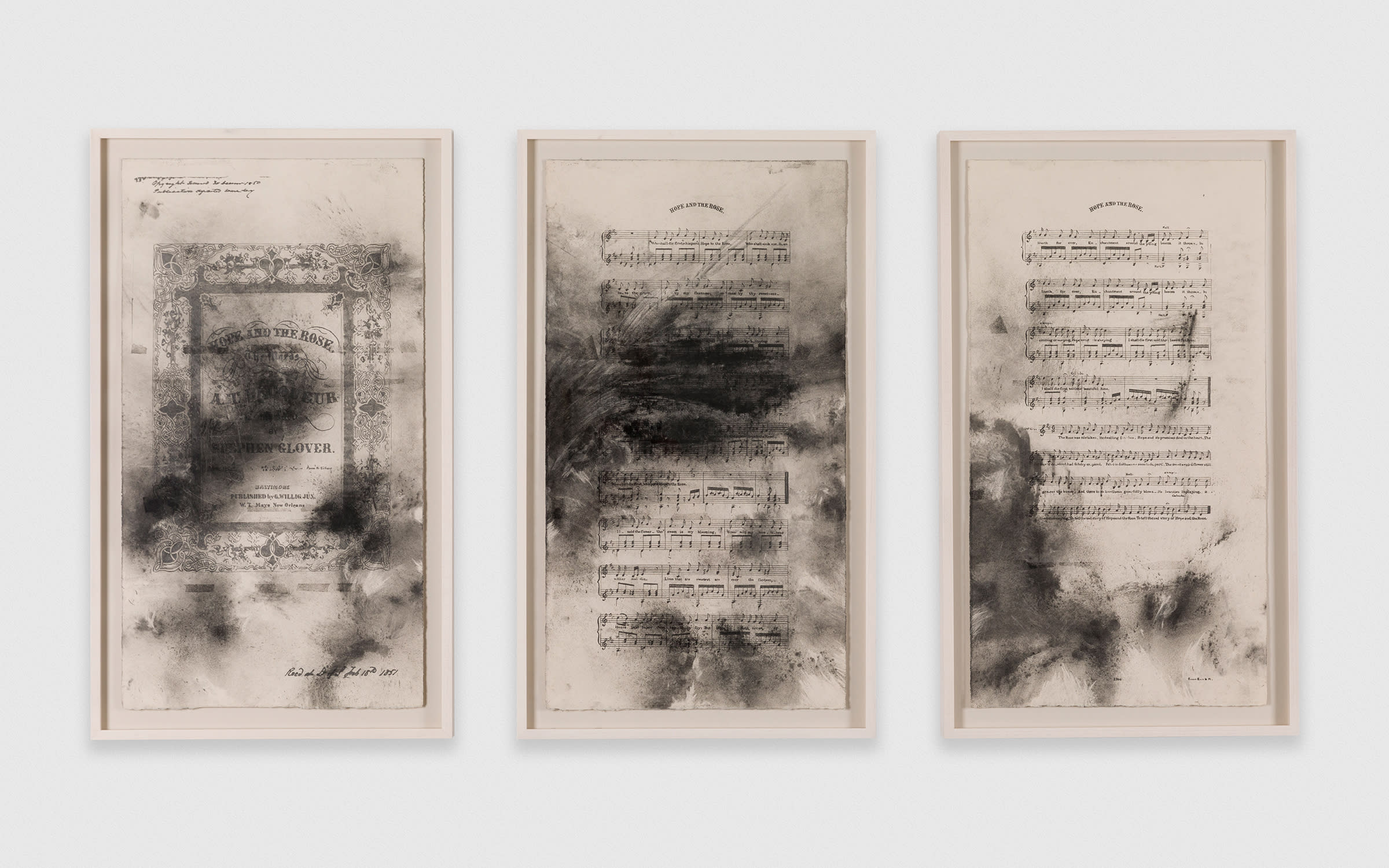
Lesser-known events and figures are also given center stage in the work of American artist Bethany Collins. Drawing from newspapers and literature, as well as institutional and personal archives, she creates pieces rooted in the history and memory of the American South. A new series of graphite and charcoal drawings, presented by Chicago gallery Patron, considers the history and symbolism of the national flower of the US: the rose. Each drawing is made on the sheet music for an American ballad, such as ‘Hope and the rose’(1850) or ‘Roses will wither’(1879).
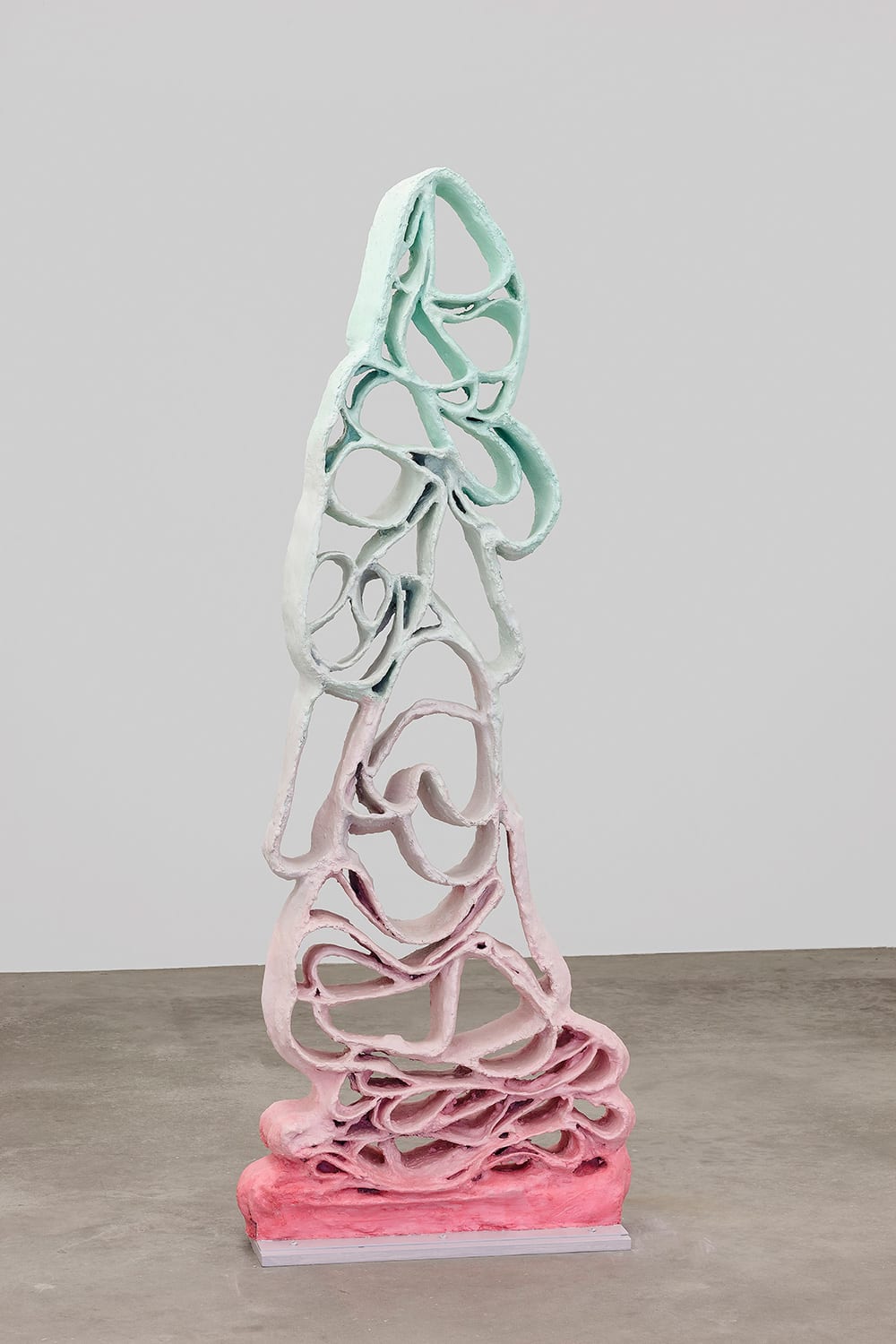
Navigating away from any specific place, object, or history, Juliana Cerqueira Leite investigates the physical presence of the human body. The Brazilian-American artist produces work through drawing, photography, video, and sculpture, such as Corpos Moles (Soft Bodies) (2020), shown by Casa Triângulo (São Paulo). Corpos Moles began as a sculpture almost 3 meters tall and made of thick paper rings, but as they were covered in pigmented plaster, gravity took hold: the paper weakened, and what was initially an oversized body-like form sagged and shrank. Cerqueira Leite talks of how such abstract works allow her ‘to explore certain intimate and less culturally celebrated aspects of embodiment, like the pleasure of giving in and of softening with time.’
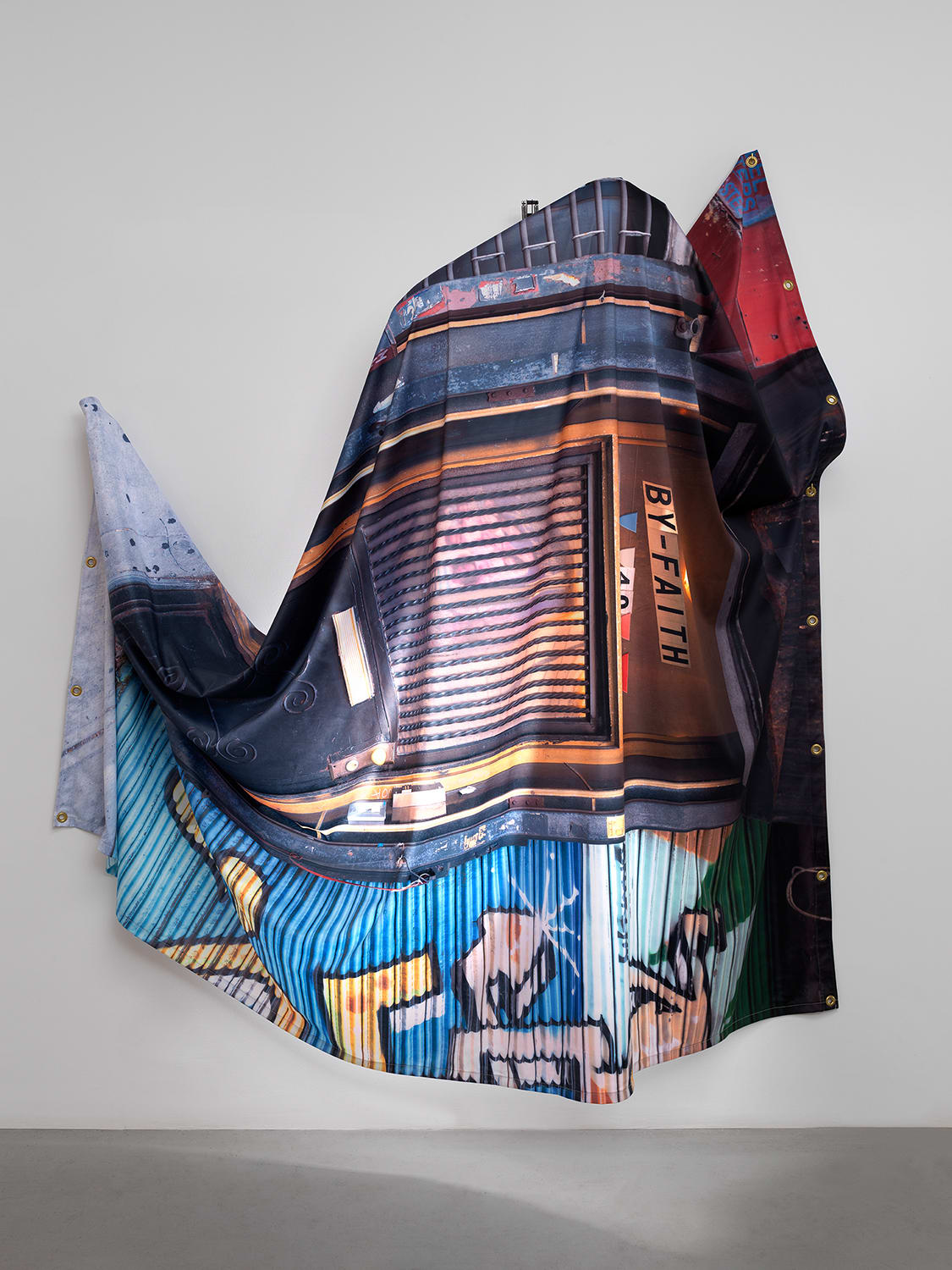
New Yorker Baseera Khan also uses the body as their point of departure, but they center their own identity in order to address colonial histories and map future potentials. While in residence at The Kitchen at Queenslab this autumn, Khan developed a pilot for a television show titled By Faith. The project is based on real conversations and situations, including being surveilled and how that coincides with gender construction and Khan’s Muslim identity. The show’s poster depicts a metal gate pulled down over a storefront next to an apartment door, above which stickers spell out ‘BY-FAITH’. In the sculpture By Faith (Front Door) (2020), presented by New York City’s Simone Subal Gallery, this poster is printed on muslin, hung from microphone stands and wood, and backlit by a selfie light.
Be it through their bodies or those of others, through everyday objects or repurposed materials, each of these 10 artists speaks to questions surrounding wider social narratives that construct our current reality. Experienced either online in ‘OVR: Miami Beach’ or physically in a gallery, their works invite viewers to shift perspectives and reconsider the state of the world – personally, politically, and socially.
‘OVR: Miami Beach’ opens for invited VIPs on Wednesday, December 2, 10am ET. Public days will follow from Friday, December 4, 10am ET through Sunday, December 6, 12 midnight ET.
Top image, desktop view: Andy Giannakakis, Kentucky Germinal (detail), 2020. Courtesy of Park View/Paul Soto, Los Angeles. Photo by Marten Elder.

